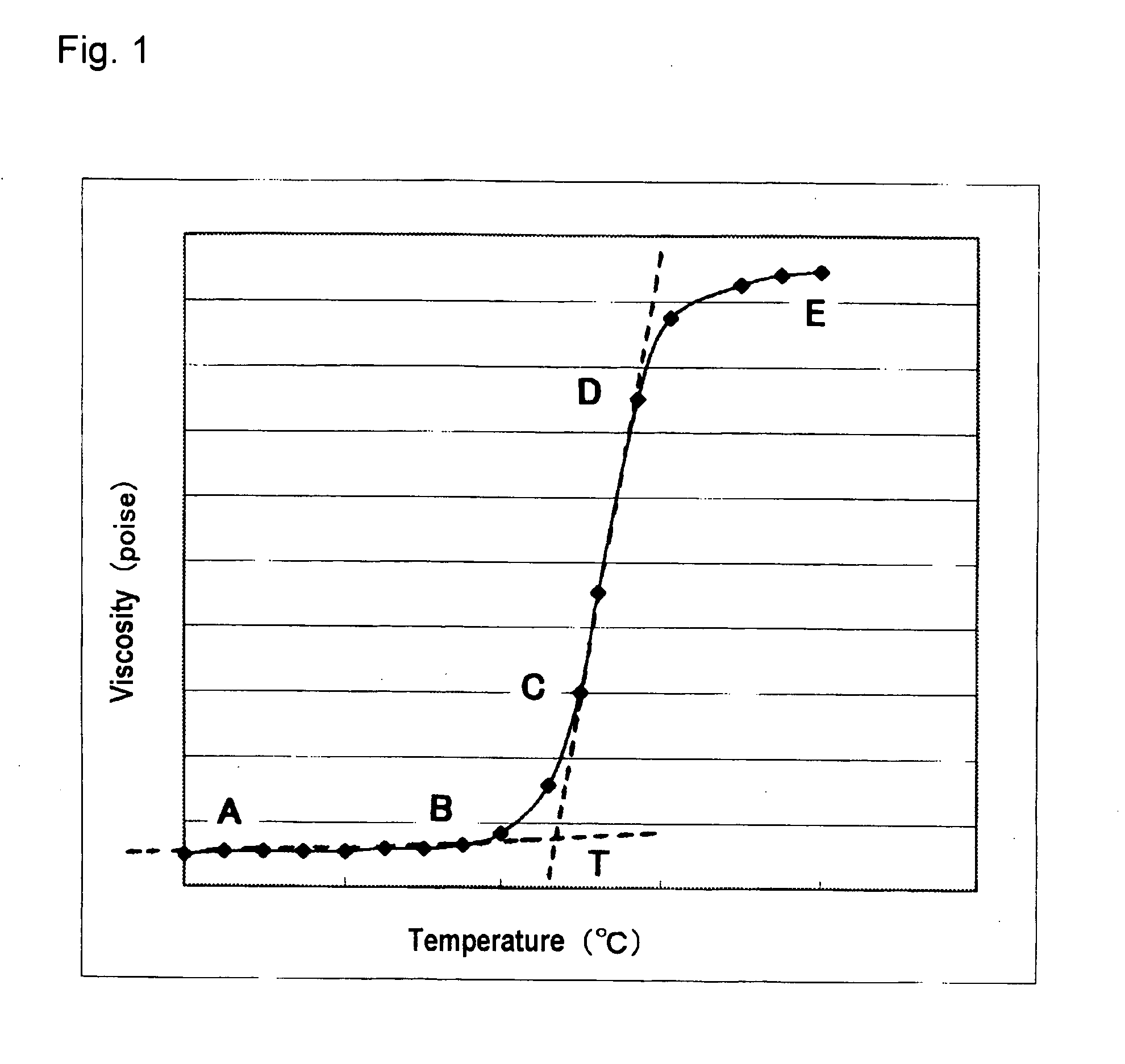Cationic electrodeposition coating composition
- Summary
- Abstract
- Description
- Claims
- Application Information
AI Technical Summary
Benefits of technology
Problems solved by technology
Method used
Image
Examples
production example 1
Production of Cationic Epoxy Resin (1)
[0098] A flask equipped with a stirrer, a cooling tube, a nitrogen-introducing pipe, a thermometer, and a dropping funnel was filled with 92 parts of 2,4- / 2,6-tolylene diisocyanate (ratio by weight=8 / 2), 95 parts of methyl isobutyl ketone (hereafter referred to as “MIBK”), and 0.5 part of dibutyltin dilaurate. With mixing the reaction mixture, 21 parts of methanol was added dropwise thereto. The reaction was started at room temperature, and reached to 60° C. by exothermic heat. The reaction was mainly conducted for 30 minutes, then 50 parts of ethylene glycol mono-2-ethylhexyl ether was added dropwise thereto with a dropping funnel. Five-mol-propyleneoxide adduct of Bisphenol A (53 parts) was added to the reaction mixture. The reaction was mainly conducted within a range of from 60 to 65° C., and was continued until absorption based on isocyanate groups disappeared by measurement of IR spectrum.
[0099] Next, 365 parts of epoxy resin having an e...
production example 2
Production of Cationic Epoxy Resin (2)
[0101] A flask equipped with a stirrer, a cooling tube, a nitrogen-introducing pipe, a thermometer, and a dropping funnel was filled with 92 parts of 2,4- / 2,6-tolylene diisocyanate (ratio by weight=8 / 2), 95 parts of methyl isobutyl ketone (hereafter referred to as “MIBK”), and 0.5 part of dibutyltin dilaurate. With mixing the reaction mixture, 21 parts of methanol was added dropwise thereto. The reaction was started at room temperature, and reached to 60° C. by exothermic heat. The reaction was mainly conducted for 30 minutes, then 50 parts of ethylene glycol mono-2-ethylhexyl ether was added dropwise thereto with a dropping funnel. Five-mol-propyleneoxide adduct of Bisphenol A (53 parts) was added to the reaction mixture. The reaction was mainly conducted within a range of from 60 to 65° C., and was continued until absorption based on isocyanate groups disappeared by measurement of IR spectrum.
[0102] Next, 365 parts of epoxy resin having an e...
production example 3
Production of a Cation-Modified Acrylic Resin
[0104] A flask equipped with a stirrer, a thermometer, a decanter, a reflux cooling tube, a nitrogen-introducing pipe, and a dropping funnel was filled with 1000 parts of butyl cellosolve, and heated to 120° C. under nitrogen atmosphere. To the flask, an aqueous solution containing 13 parts of 4,4′-azobis-(4-cyanopentanoic acid); and a mixture of 250 parts of acrylic acid 4-hydroxybutyl ester, 70 parts of methacrylic acid 2-ethylhexyl ester, 480 parts of methacrylic acid n-butyl ester, 100 parts of methacrylic acid dimethylaminoethyl ester and 90 parts of acrylic acid 2-methoxyethyl ester; were added dropwise thereto in two lines for three hours, then the reaction was conducted for additional 3 hours at 115° C. The reaction mixture was cooled to obtain a cation-modified acrylic resin having amino group.
PUM
| Property | Measurement | Unit |
|---|---|---|
| Temperature | aaaaa | aaaaa |
| Temperature | aaaaa | aaaaa |
| Fraction | aaaaa | aaaaa |
Abstract
Description
Claims
Application Information
 Login to View More
Login to View More - R&D
- Intellectual Property
- Life Sciences
- Materials
- Tech Scout
- Unparalleled Data Quality
- Higher Quality Content
- 60% Fewer Hallucinations
Browse by: Latest US Patents, China's latest patents, Technical Efficacy Thesaurus, Application Domain, Technology Topic, Popular Technical Reports.
© 2025 PatSnap. All rights reserved.Legal|Privacy policy|Modern Slavery Act Transparency Statement|Sitemap|About US| Contact US: help@patsnap.com


